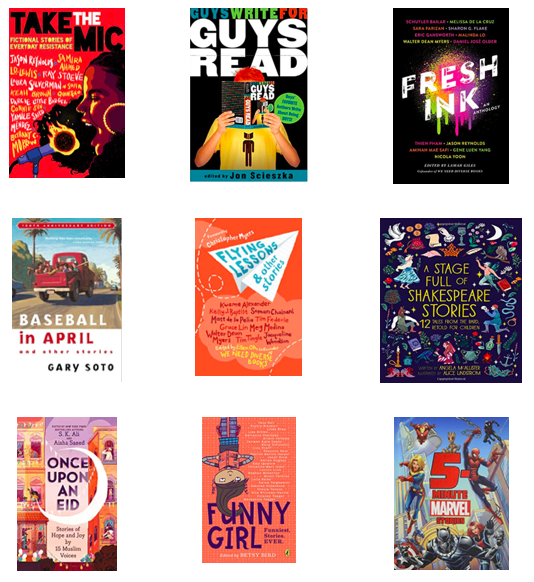Written by Julie Wright & Elizabeth Keim
By design, picture books combine the wisdom of the words with the visual power of the illustrations to convey the story. Beginning with the earliest readers, picture books create building blocks that promote a lifelong love of literacy.
We love picture books because they can be read multiple times and for multiple reasons. We love to share picture books with students. Sometimes we read aloud to students for pure pleasure or to showcase fluent reading. Other times, we use shared reading as a way to dive into a book with students so that we can unpack the story and co-construct meaning together.
If you liked our Short Texts at Your Fingertips: Picture Books (Fiction), we think you’ll love these ideas about taking one short text about a favorite picture book and expanding it into a short text set. Just a reminder: If you don’t have this book at your fingertips, swap it out for one you do have and imagine other short texts you can pair with it to create a short text set.
TRY THIS
Step 1
Some children may need some historical background to understand this book. Consider both the background knowledge the children already have and their developmental age when you introduce this book and texts that support this book in the short text set.
Start by sharing Who Are Your People?, written by Bakari Sellers and illustrated by Reggie Brown. As you share the book, spend some time talking about the opening page. Use this excerpt from the book to launch an authentic conversation about the people who have shaped you/us.
Then, as you read the rest of the book, consider:
Listening to Who Are Your People? read aloud by the author, Bakari Sellers.
Leaning into the illustrations (check out Reggie Brown’s website) and references to the figures in the book which includes:
Muhammed Ali
Maya Angelou
Stacey Abrams
Martin Luther King, Jr.
Harriet Tubman
Barack Obama
Serena Williams
Jackie Robinson
Kamala Harris
John Lewis
Talking about the proverb in the book that says, “it takes a village to raise a child.”
Discussing the call to action at the end of the book that reads, “So what will you dream, and how will you change the world?”
Step 2
Sharing this picture book can lead to other reading, writing, and talking opportunities, especially when you curate a short text set that includes picture books and other short text types like the example below. Take a look.
Use this short text set during whole group shared reading, with small groups or give students individual opportunities to read the texts to learn more about civil rights, Black heroes and resistance stories.
In addition, you could:
Share historical information about McCrory’s Five & Dime lunch counter that prohibited African Americans to eat a hot lunch while dining in and those who resisted these policies.
Ask students to pick one (or more) of the people found in the book, Black Heroes: A Black History Book for Kids: 51 Inspiring People from Ancient Africa to Modern-Day U.S.A. to read and study. Each two-page spread includes a quote, an informational piece and illustrations → all short texts within a short text!
Visit Bryant Terry’s website and learn more about his food, stories and activism.
Invite your students to answer the question “Who are your people?”for themselves
Depending upon their age and experience many children will start with their family members.
Next, you may want to ask questions and provide resources to encourage going beyond immediate family and thinking about the less personal influences in their lives.
Check out Social Justice Books for other curated booklists!
GOING DEEP & WIDE
Looking for more titles and short text types that add to and expand your text set? Check out these titles:
STAY TUNED!
More about short texts and short text sets coming soon!









